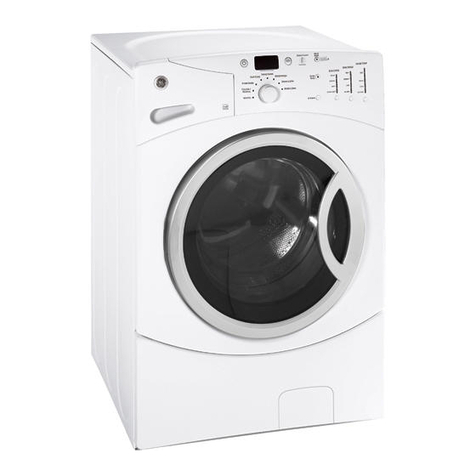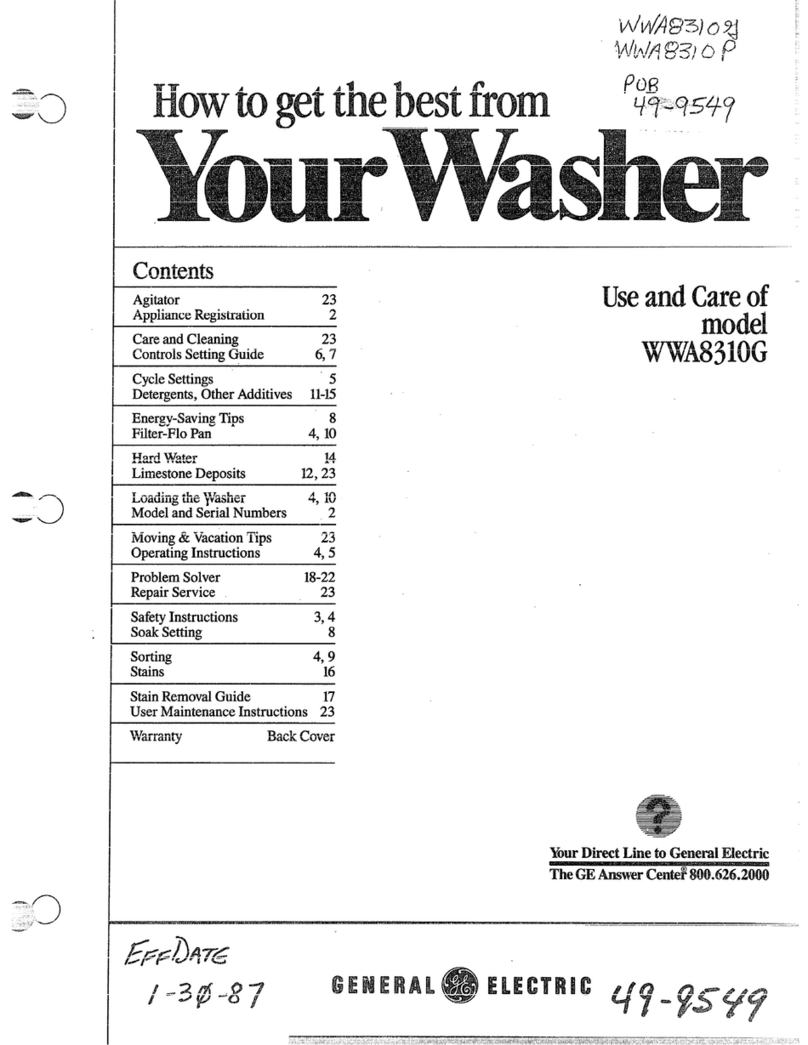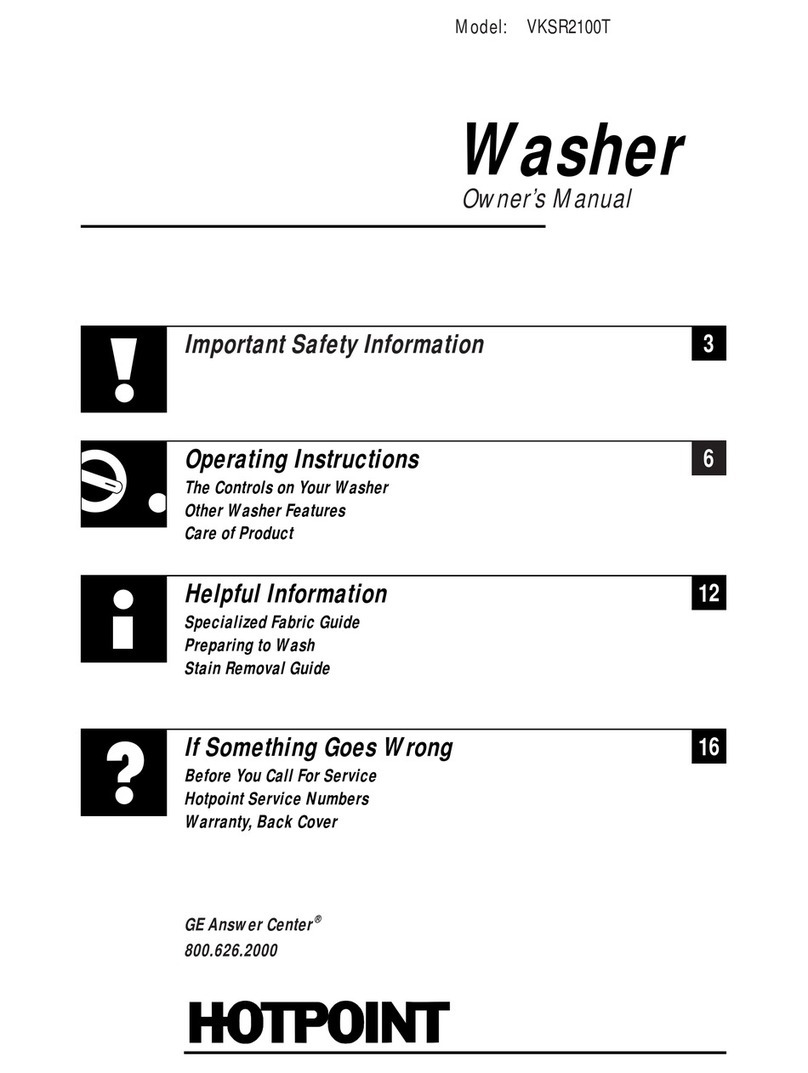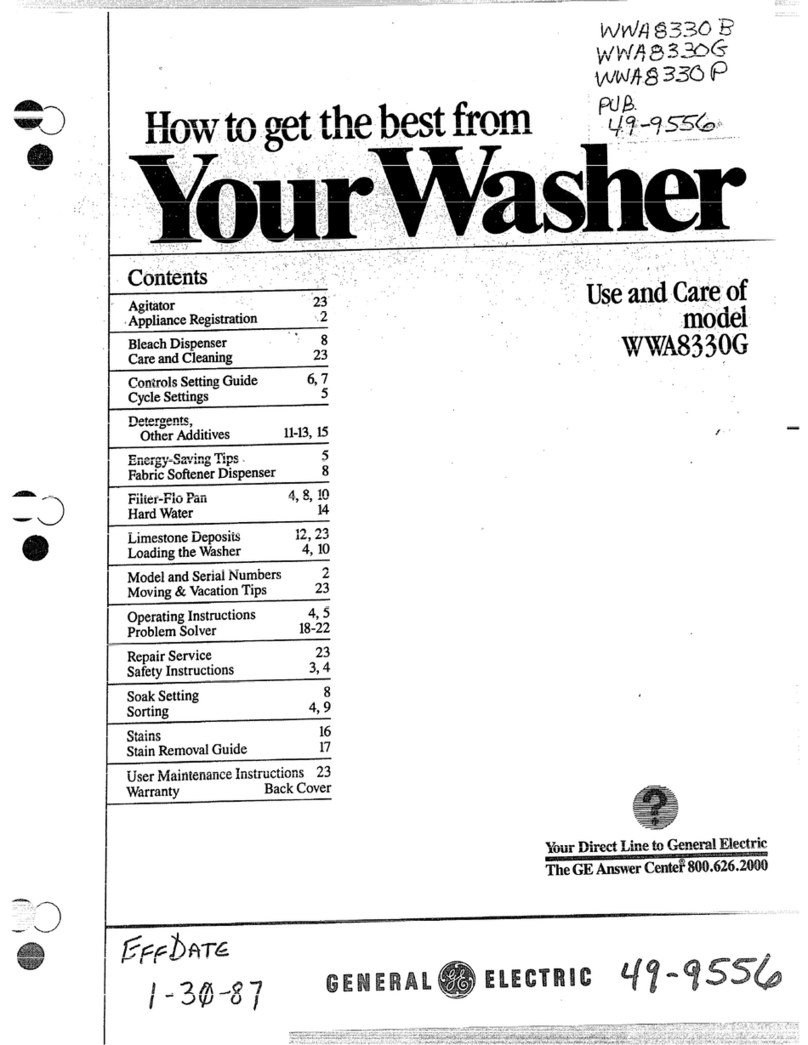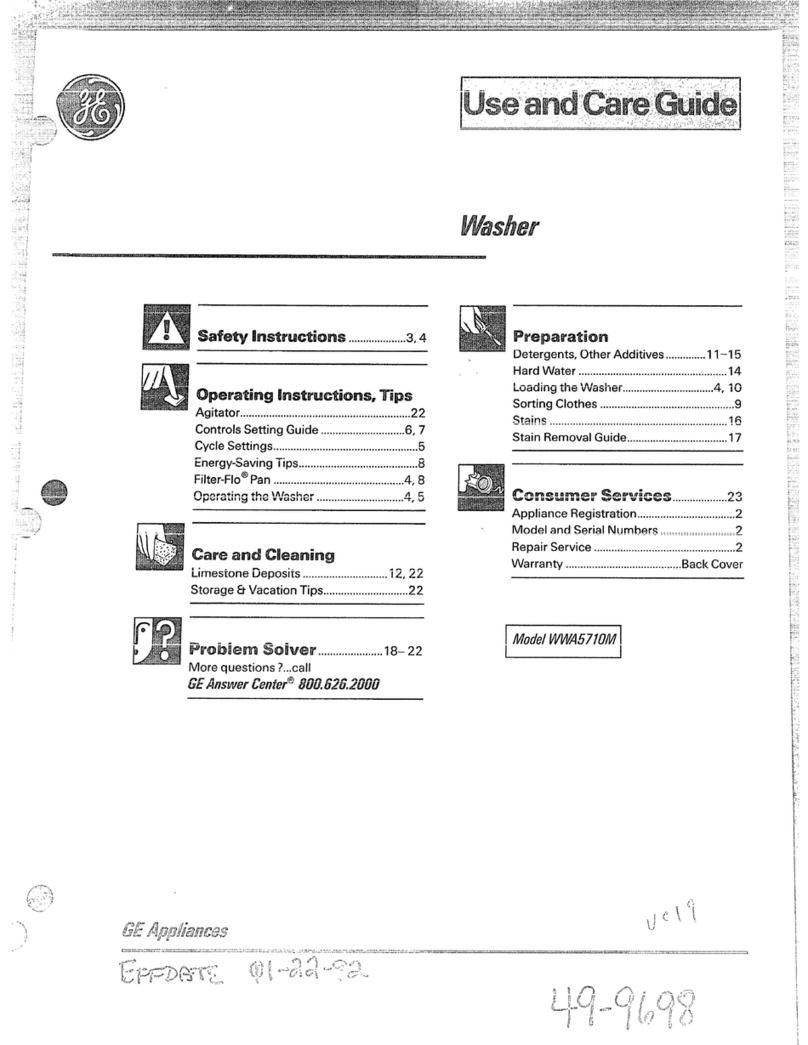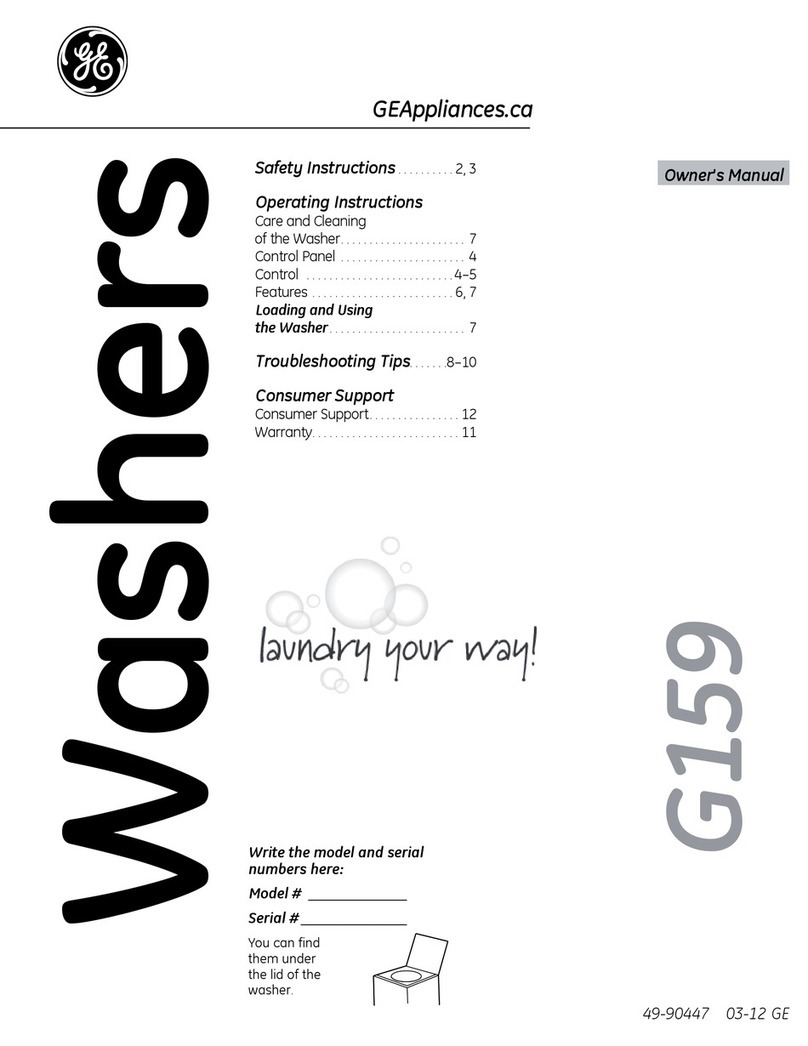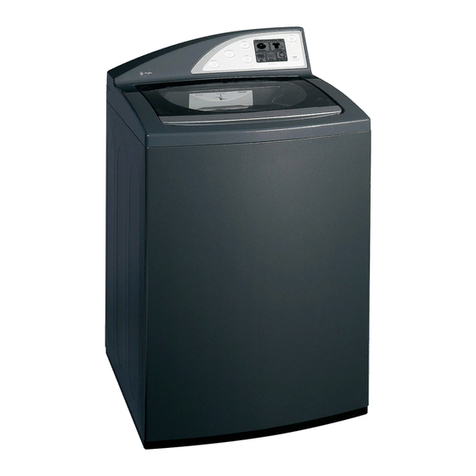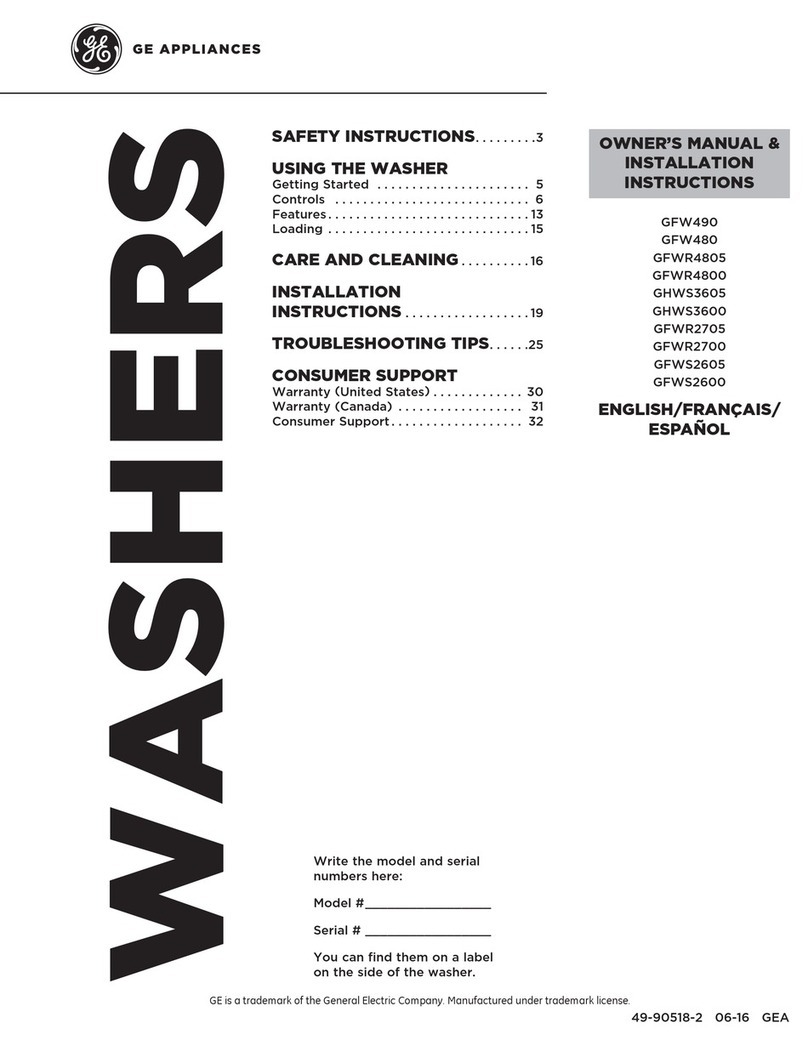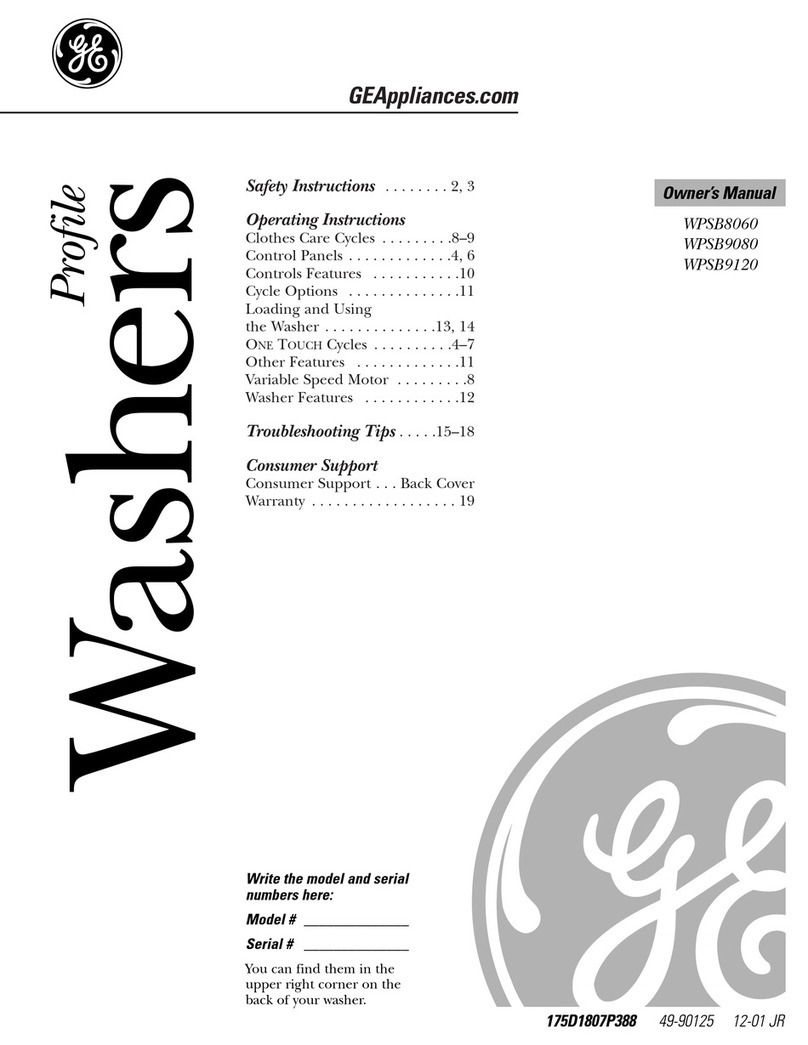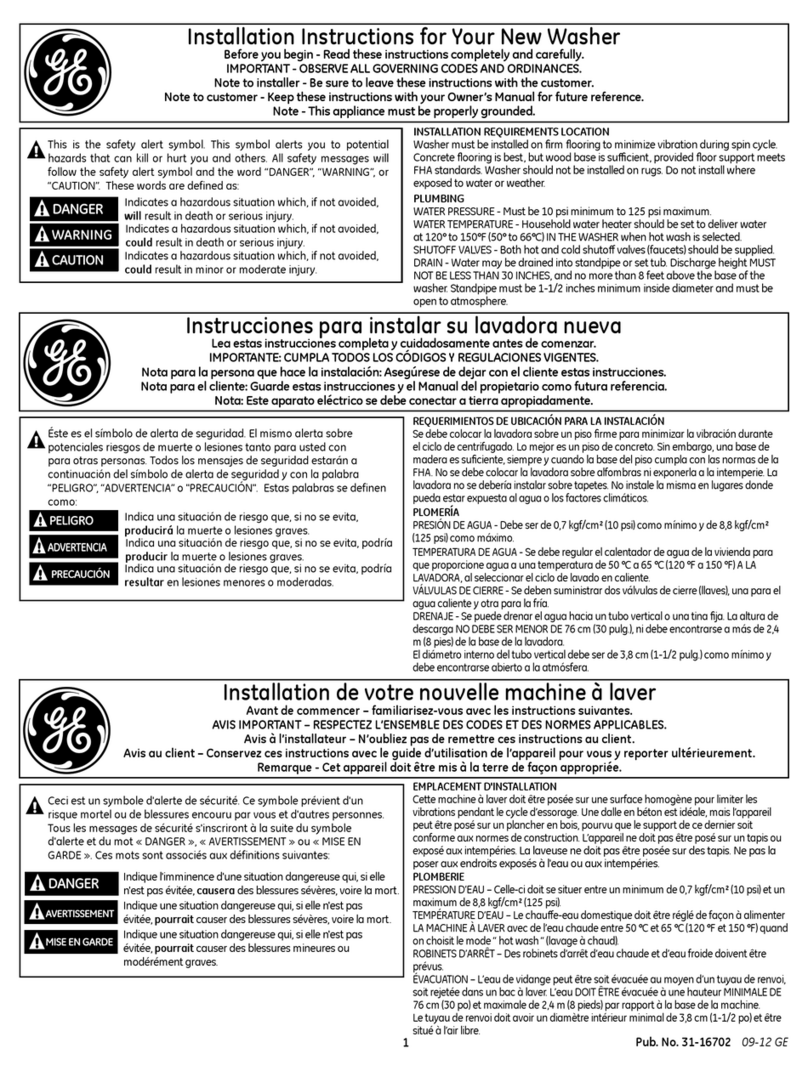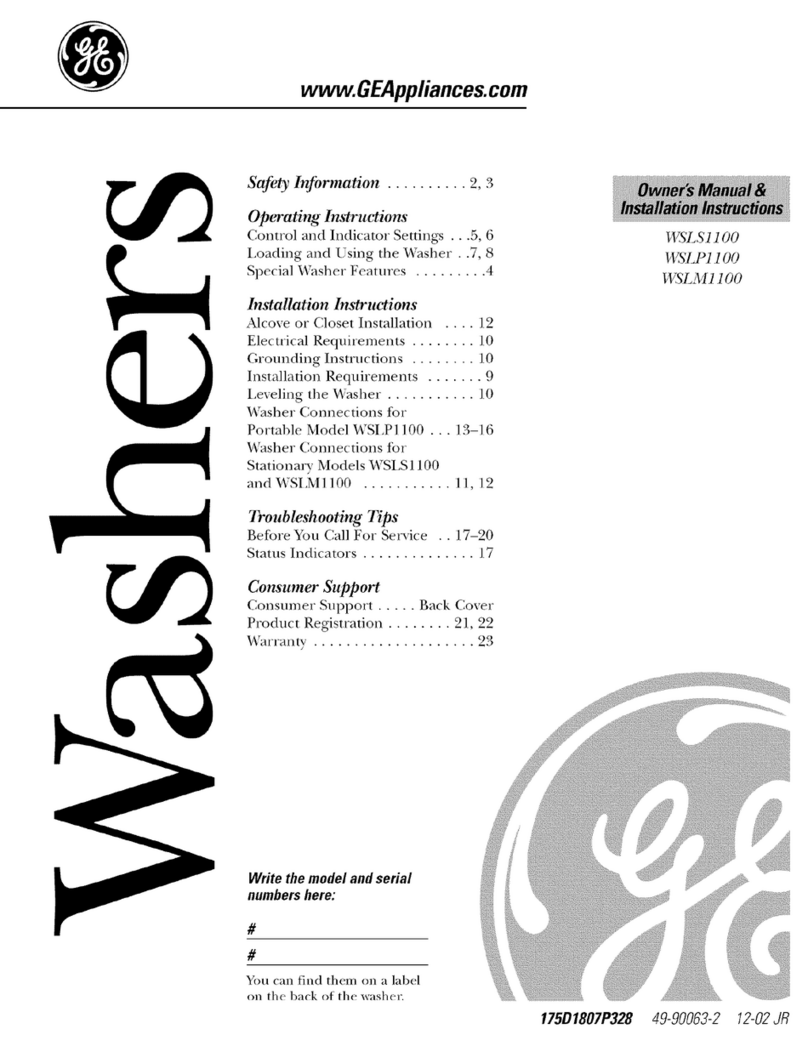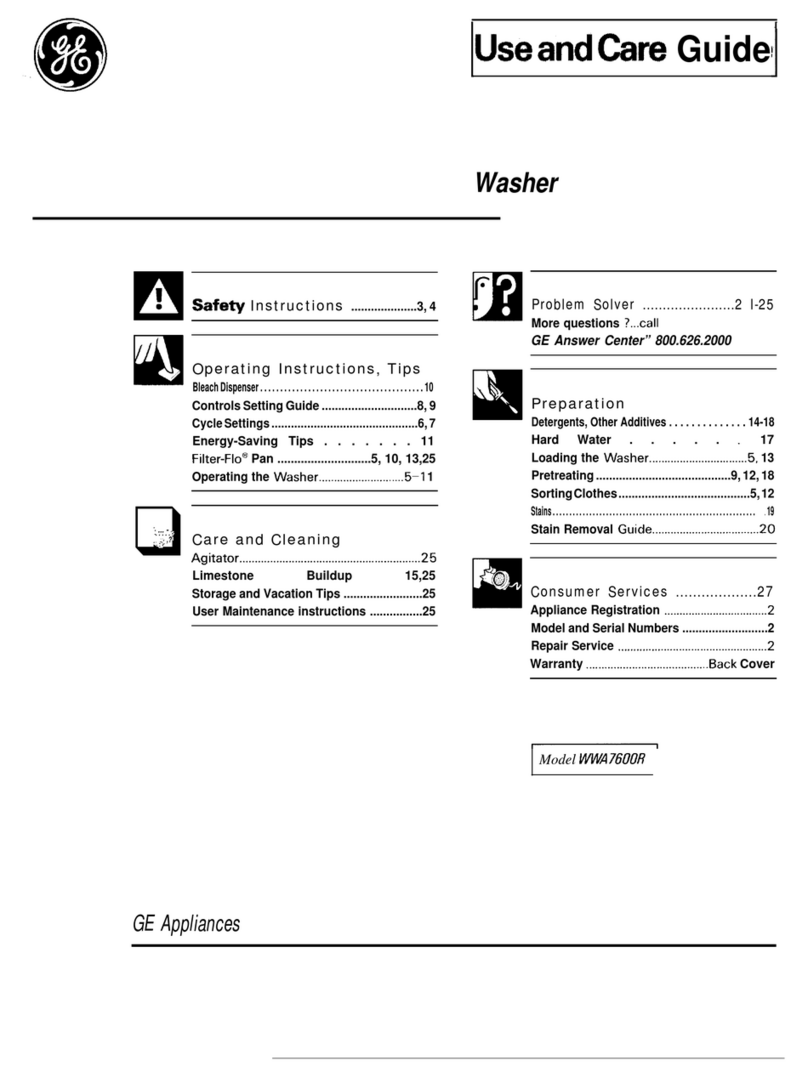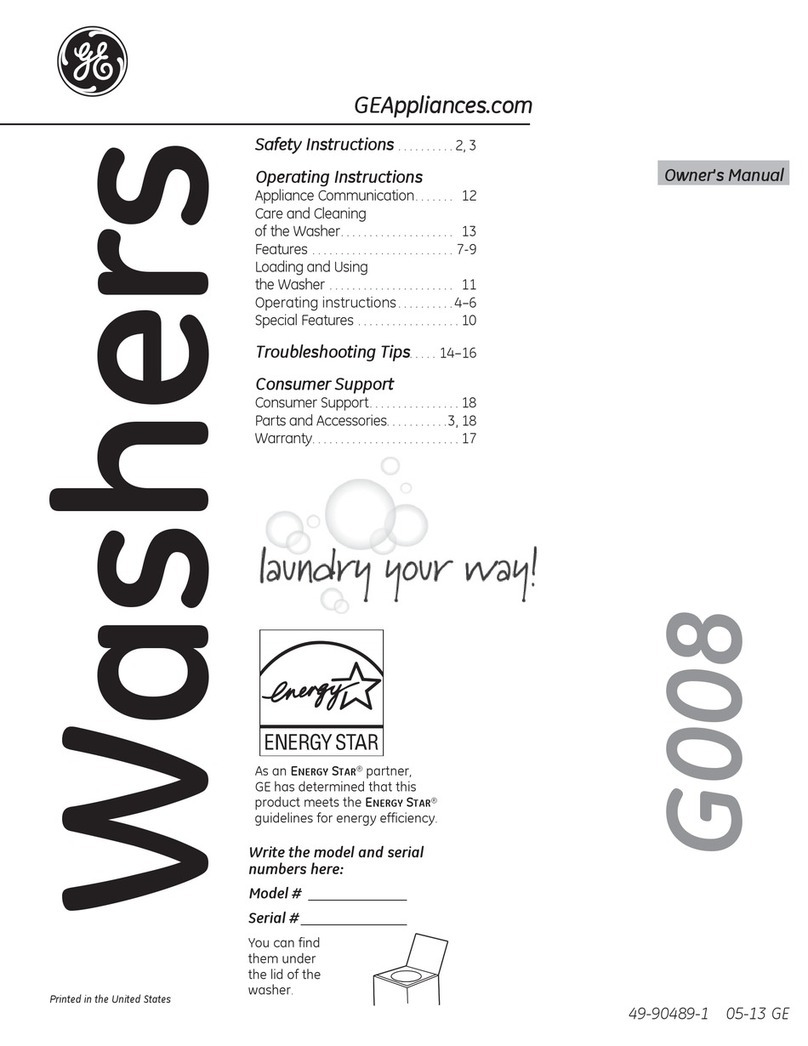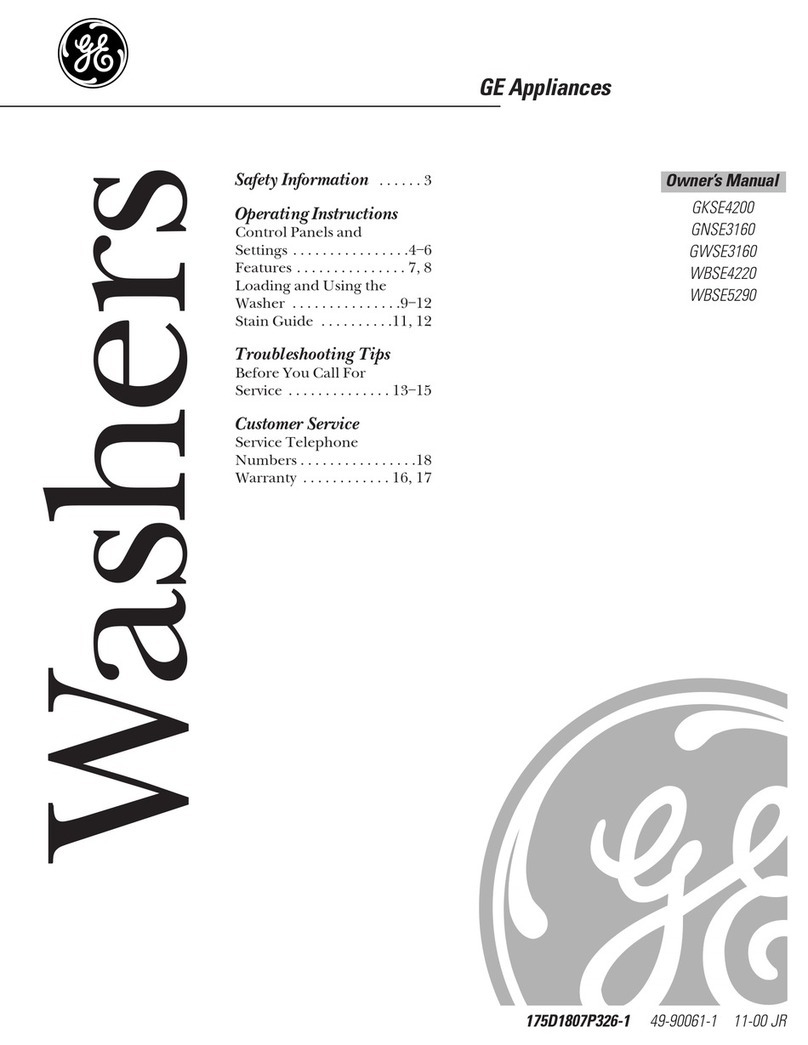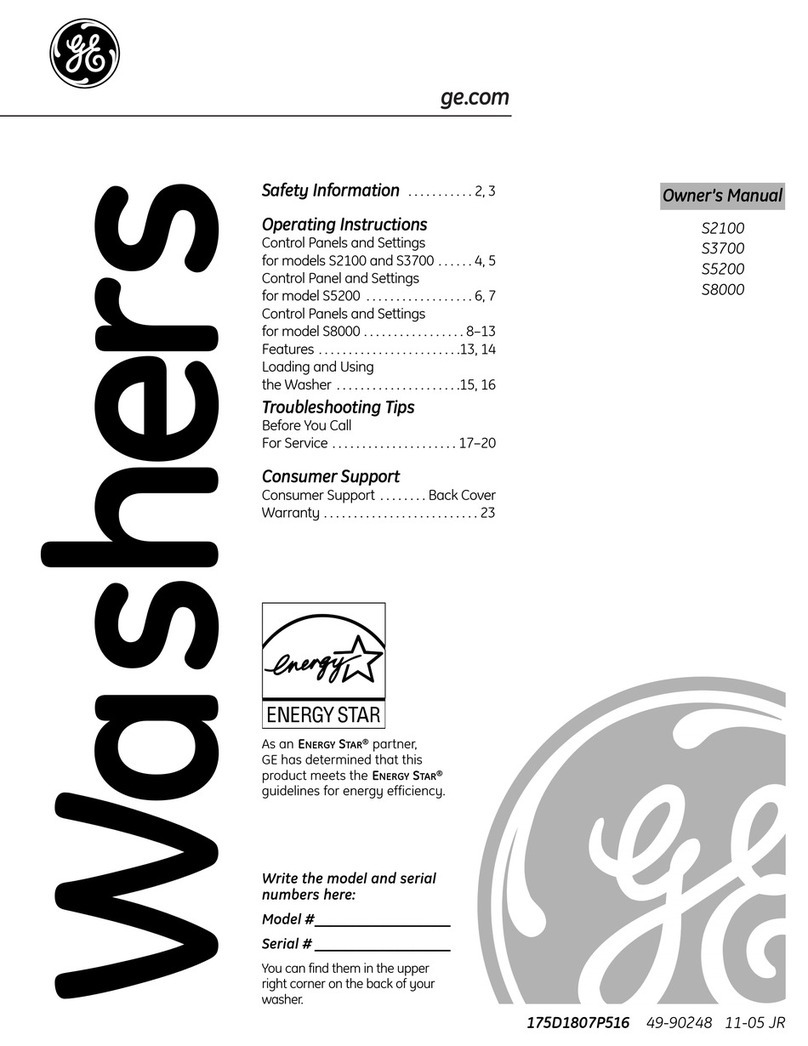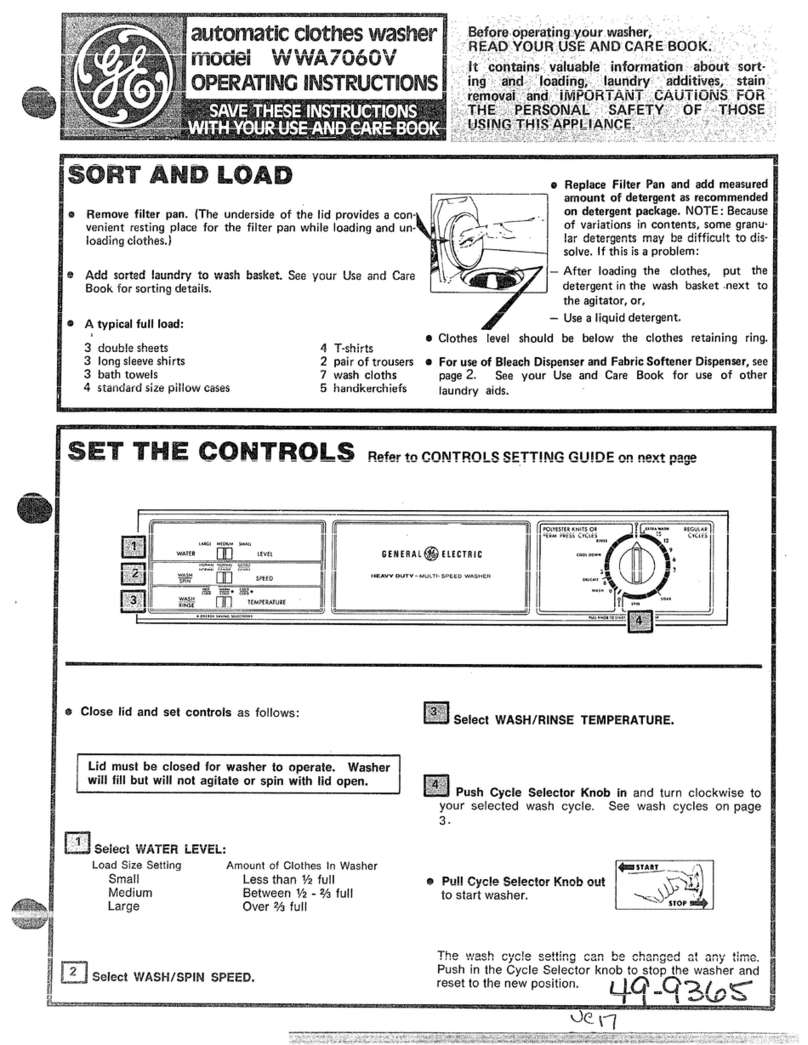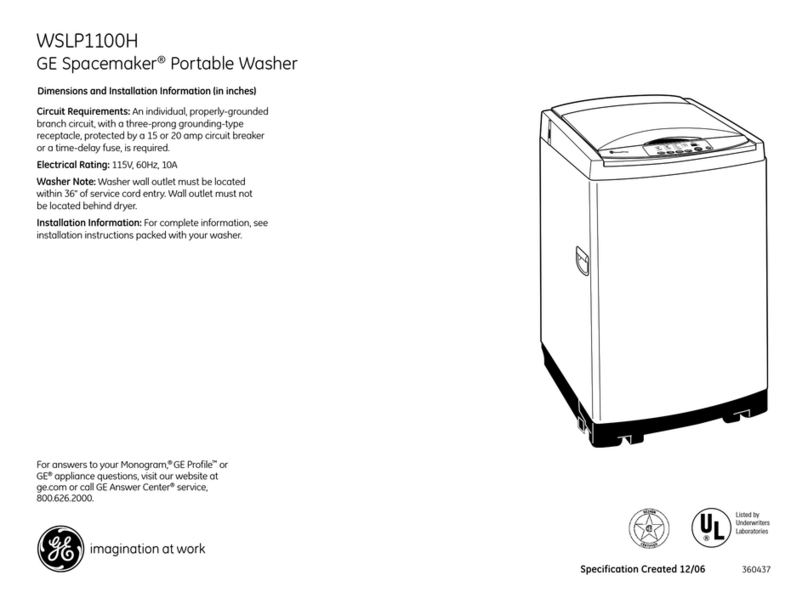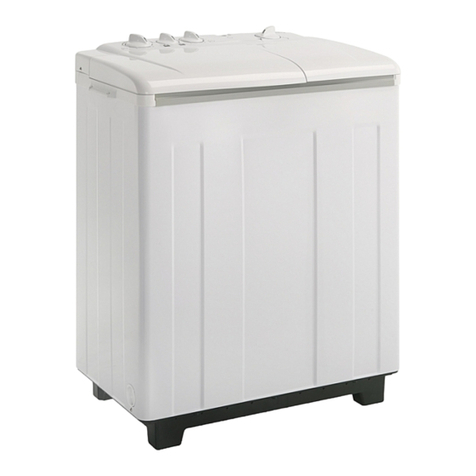W~IN~-To reducethe riskof fire, electricshock,or injurytopersons,
readtheIMPORTANTSAFETYMSTIUJCTIONSbeforeoperatingthisappliance.
Q
Thiswashermaybe usedintwo
ways—asaportableor asabuilt-in
washer.Chancesare youwillfirst
useitas portableand thenhaveit
permanentlyinstalledatalaterdate.
Whenusingyourwasherasportable,
pressthe ReleaseLever withyour
foottoengagethe rear wheel(see
IllustrationA) and roll ittothe
mostlevelpositionnear thewater
and powersource. Press theLock
Leverto disengagethe rear wheel
and secure thewasher inplace for
washing(see illustrationB). Make
surethe washeris firm to the floor
anddoes not rock. When finished
washing,presstheReleaseLever
andyoucan rollthe washertoyour
storagearea where, bypressingthe
Lock Lever,youcan keep it from
movinguntilyouneed it again.
Storewusherwith back towarda
wailif“possible.
~...:ipjj+,
~?
-“----- —./
. . ,~,
. .
,,, %’
““”/“\/~
HowtoLoadYoui*Washer
oAddmeasuredamountof
detergentaccordingto loadsize,
amountofsoiland waterlevel.See
pages9through 11fordetailed
informationontypesand amounts
ofdetergent.
@Loadclothesloosely.Dry clothes
levelshouldbe no higherthanthe
toprowofcircularholesinthewash
tub.Do notputclotheson topofthe
agitatoror windthemaround it.
For bestresults,mix largeitems
with smallones. When washinga
singleheavyitem, such asashag
rug or bedspread, add oneortwo
other piecestobalancetheload.
Largeitemsshouldbe no more
than one-halfofthe totalload.
Here isatypicalfull load:
2doublesheets 2long-sleeve
3boxershorts shirts
3T-shirts 4standard
2pair trousers pillowcases
@Tobieachthe load, measure
liquidbleachaccordingtodirections
on container.Afterwasherhas filled
anciagitatedfbrseveralminutes,acid
diluted bleach to the washwater.
How touse ptwkwed bleach,
fabricsoftenersandotherlaundry
products isexplainedon page 13.
~Close lid. Washerwili filland
agitatebut will not spin with iici
open. This washc]+has aSafe[yLid
Lock. As asafet~~
measure the iid
\\’i]Ihc automotical]ylockedduring
the spin porti(mt~fCUJ1lcycle.The
Iid will automatically unlock about
X) scconcis otkr- tk en(i ofthe spin
430
cycle.Toopenlidduring spin
cycle,pushCycleSelectorIN and
waitforlid locktorelease, about
30 seconds,beforeopening.
Foryourpersonalsafety,never
reachintowasherwhile partsare
moving.Alwaysstopwasherto
load, unload, addforgottenitems
or additionallaundryaids.
Self-cleaninglintfilter.The lint
filterneedsno attentionfrom you.
Lintcollectedduringwashingand
rinsingofclothesis automatically
flusheddownthedrain.
Setthecontrols
Seethe Control SettingGuide on
page7. WaterLevel
SMALL: Washerislessthan 1/3
fullofclothes.
VARIABLE:Setbetween SMALL
and LARGE to adjustload sizes
between 1/3and 2/3 full.
LARGE: over2/3 full.
If youwish to increase levelafter
you’vemade aselection, turn knob
to “RESET” antiselect new level,
@SelectWash/RinscTcmperature
SetWash/RinseTemperature
switchat Warm/Warnl(MANUAL)
and leave itc~tthissetting. To
connect washer youmust first
installadapter according to the
instructionsincluded with the
faucet adapter package. Grasp
couple, pull hoses out of cabinet
until red marker on hoses is
visible.
